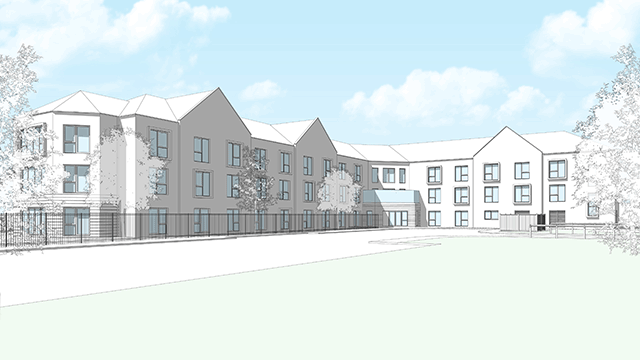An “agreement for lease” is a legal contract that can be entered into by a landlord and a tenant. These are used when the parties agree to enter into a lease at some point in the future, usually because it isn’t immediately practicable.
First – before we delve into the fundamental parties involved – some housekeeping. For an agreement for lease to be valid, the four basic elements of a contract must be satisfied:
- offer;
- acceptance;
- consideration; and
- intention to create legal relations.
In addition, the agreement for lease must comply with section 2 of the Law of Property (Miscellaneous Provisions) Act 1994 and therefore must:
- be in writing;
- contain or incorporate all the terms expressly agreed between the parties; and
- be signed by (or on behalf of) the parties.
This means that all the terms should be agreed between the parties in advance and a copy of the agreed form of lease should be annexed to the agreement.
Common agreement for lease situations
An agreement for lease may be required in a wide range of scenarios, such as when:
- a tenant requires planning permission to be obtained for change of use before occupying;
- the consent of a superior landlord is required before a lease can be granted;
- a tenant wants to delay the completion of the lease for its overall business needs (for example, if the business is relocating and does not wish to start paying rent until the term of the previous lease has expired); or
- the property requires major refurbishment (or even to be built) before it can be considered ready for occupation.
The above list is by no means exhaustive and the scenarios that may require an agreement for lease are infinite in number. Later in this article, we will take a closer look at the last of these four circumstances.
Key parties
It is important to recognise that, although it is often only the landlord and the tenant (and in some cases a guarantor) who are party to the legal document forming an agreement for lease, where the agreement for lease is part of a wider development process there will be a wide range of parties involved. These include:
- Developer – The developer, which may also double as the landlord, identifies the opportunity and secures the site for the purposes of development. Depending on the method of procuring the construction team, the developer may appoint a building contractor along with a number of consultants to undertake the development. From a developer’s perspective, an agreement for lease is a fundamental part of all types of development, from simple refurbishments to whole redevelopments, as the ideal situation is to secure a fully prelet development with tenants lined up ready to occupy every single lettable unit before the development has even begun.
- Tenant – The tenant will of course be party to the agreement for lease and is committing to entering into the lease at a date in the future. There is a wide range of issues which should be considered by a tenant when entering into an agreement for lease (see below).
- Building contractor – A building contractor may be appointed under a building contract to conduct the works in accordance with agreed specifications and plans. It will need exclusive possession and total control of the access to and from the site until the date of practical completion. This is important in light of the agreement for lease, as once the lease itself is complete, the tenant will require exclusive possession (save for any rights reserved under the terms of the lease).
- Buyer – As outlined above, the developer aspires for a fully prelet development to increase the value paid by any prospective buyers. From a buyer’s perspective, the agreement for lease will need to include all acceptable provisions and should ideally commit the parties to enter into a full repairing and insuring lease where the costs of all repairs and insurance are borne by the tenant. Depending on whether the buyer enters into a forward funding agreement, by taking a transfer of the site at the outset and effectively employing the developer to deal with the development (or if the buyer enters into a forward purchase agreement), the buyer may even be party to the agreement for lease with the developer as a third party.
- Funder – Finally, if there is a third-party funder, it may be a condition of the funding agreement that the developer or landlord has entered into an agreement for lease, as funders want to ensure that all the monies (along with interest) are repaid once the development has been resold.
Again, this list of key parties is far from exhaustive and there may also be an architect, quantity surveyor or costs consultant, project manager, mechanical engineer, structural engineer and various other specialist consultants involved.
It is important to highlight all the parties involved as throughout the development process each of the parties will enter into different contracts to deliver different things. All the contracts between each of the parties will have a knock-on effect on other agreements, so it is important that the agreement for lease is not looked at in isolation. All these parties are likely to have conflicting objectives, and it is therefore key to appreciate that certain terms cannot be agreed in the agreement for lease if differing terms have already been agreed in prior agreements (such as the building contract).
Landlord construction or refurbishment works – tenant considerations
In a situation where the property is being constructed or modified and is not yet ready for occupation, a tenant may enter into an agreement for lease because the property truly meets its needs or suits its location and therefore it wants to secure the property in advance.
Despite this, the tenant may still want a level of discretion, as the fit-out and layout of the property – and therefore the agreement for lease – should set out exactly the works that are required to be done, including a detailed specification. The tenant should ensure that the landlord is obliged to carry out the works to a certain standard, often with reasonable care and skill and using good-quality materials – notwithstanding that all works should be in accordance with all relevant statutory approvals.
If the tenant is in a strong bargaining position, it may also demand a degree of involvement, control and supervision of the works – for example, allowing for the tenant to make changes to the specification during the works or allowing its surveyor to inspect, make comments and representations, and point out any errors or variations not permitted by the agreement.
The date of completion of the lease is typically tied to practical completion of the works – often when the certificate of practical completion is issued by the landlord’s architect. However, the tenant should ensure that the agreement for lease does not force it to complete the lease until the property has been fully completed to its satisfaction.
Tenants can take steps to avoid this, including:
- seeking to maintain control over who is acting as the certifying architect and providing the certificate of practical completion;
- ensuring the attendance of its own representative at the final inspection;
- arranging for a joint inspection by both the landlord’s and tenant’s representative before the certificate of practical completion is issued; and
- ensuring that the tenant has the ability to object and delay the certificate of practical completion if – in its own opinion – the works have not yet been satisfactorily completed.
On the flip side, the tenant is also likely to require practical completion by a certain date, especially where the timing of the access is crucial to the tenant’s business operations (ie, where the tenant is moving from the premises where it conducts business and requires occupation on vacating the previous premises). To ensure that this occurs, a longstop date should be included to ensure that the building or works are completed by a certain date to avoid the risk of the lease being granted at a time which is incoherent with the tenant’s business plans.
Following practical completion, the issue arises as to who is responsible for any defects, and the tenant will want to avoid all liability. The agreement for lease should outline who is responsible. Liability tends to fall on the landlord where defects arise within 12 months of practical completion. In an FRI lease, the liability will then be placed on the tenant outside of the 12-month period. In agreeing an agreement for lease, terms should be incorporated to determine whether inherent and latent defects in the works are excluded from the tenant’s repairing liability, and if so, who is responsible. One work-around for this issue may be that the landlord’s contractor enters into collateral warranties with the tenant.
Always remember to register
As the lease is not entered into on the date at which the agreement for lease is completed, a tenant that has entered into an agreement for lease is vulnerable to the landlord selling the reversion (also known as the freehold interest), which would ultimately defeat the tenant’s interest in the property.
For this reason, a tenant that has entered into an agreement for lease should always register the agreement for lease at HM Land Registry as a Class C(iv) land charge if the land is unregistered or as a notice if the title to the land is registered.
Millie Pancholi is a paralegal at Brabners








